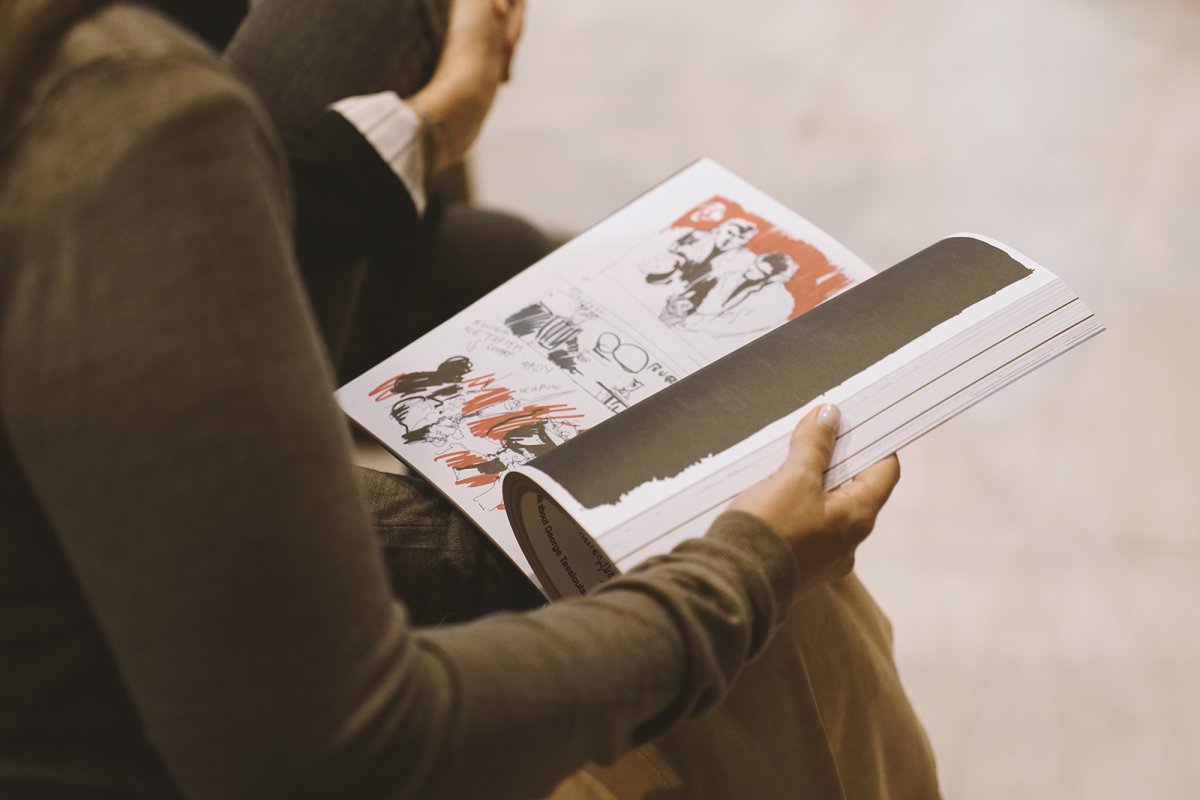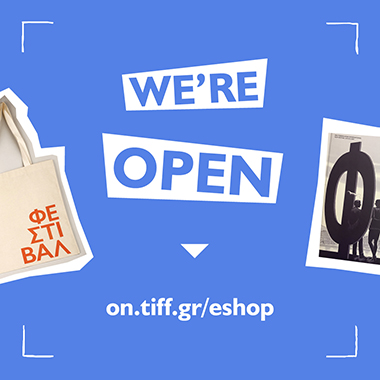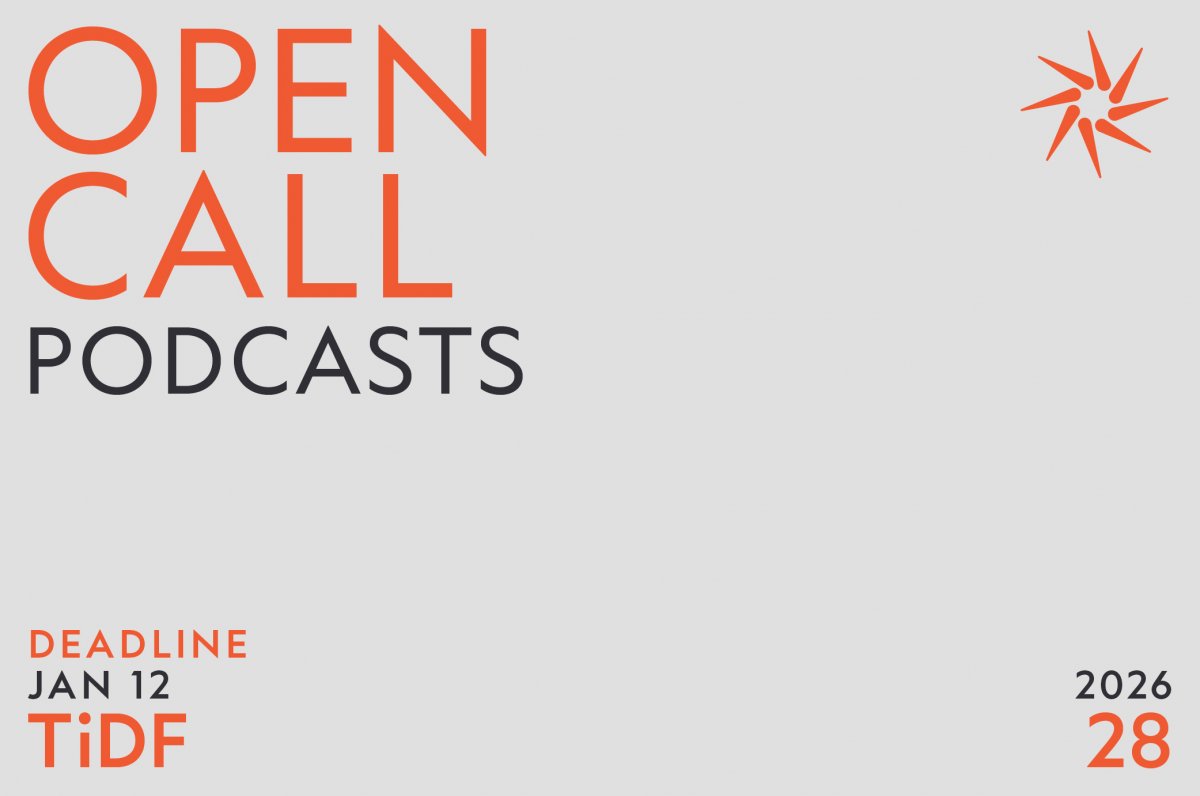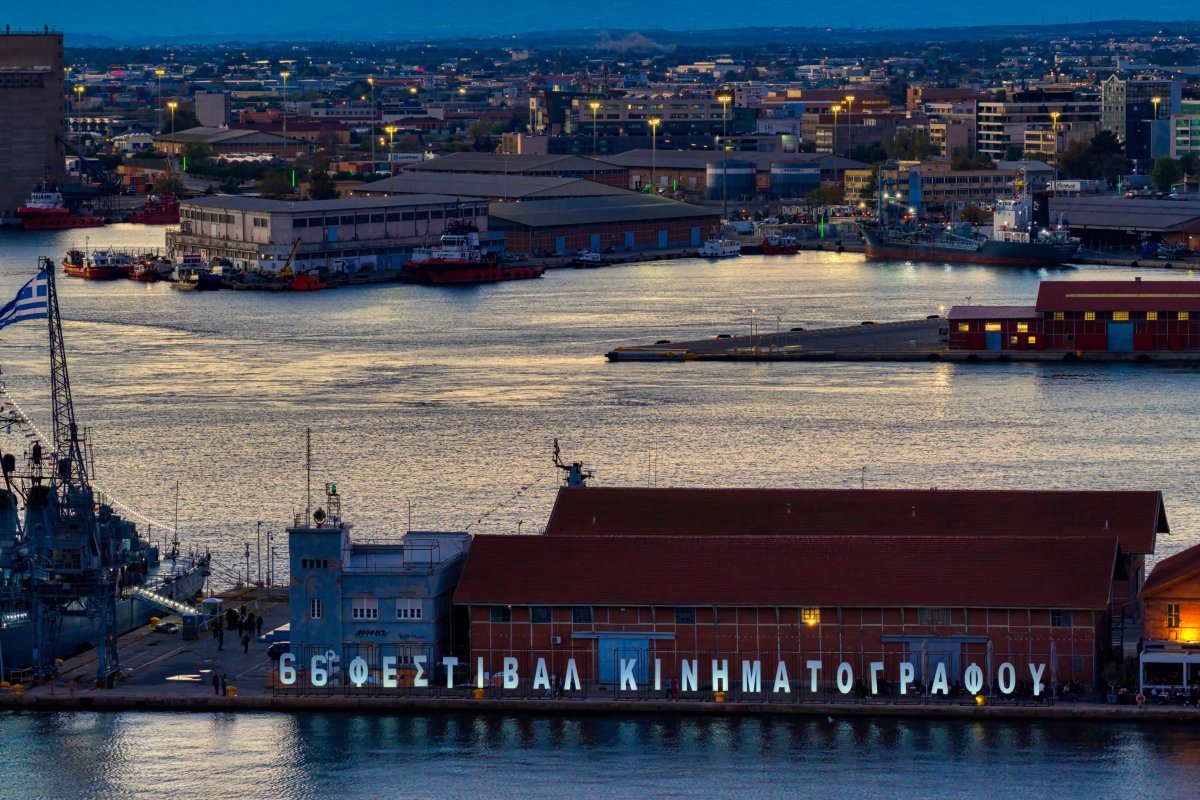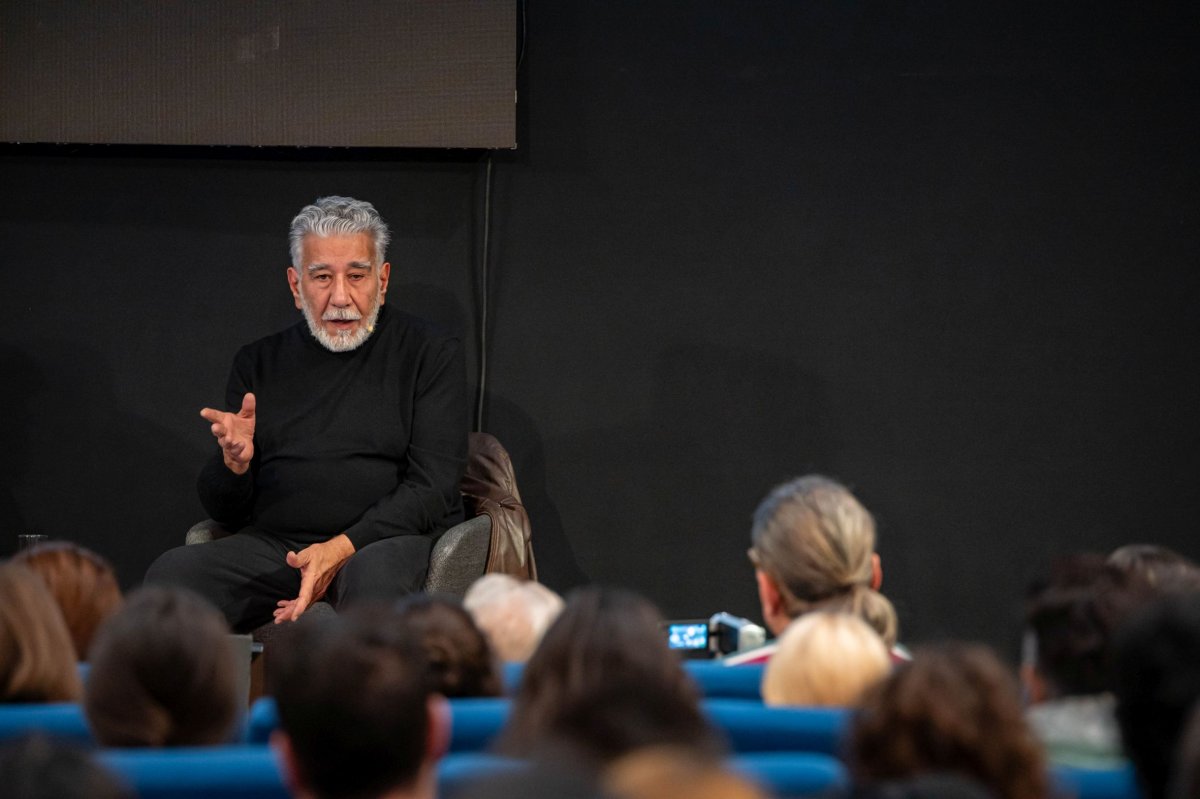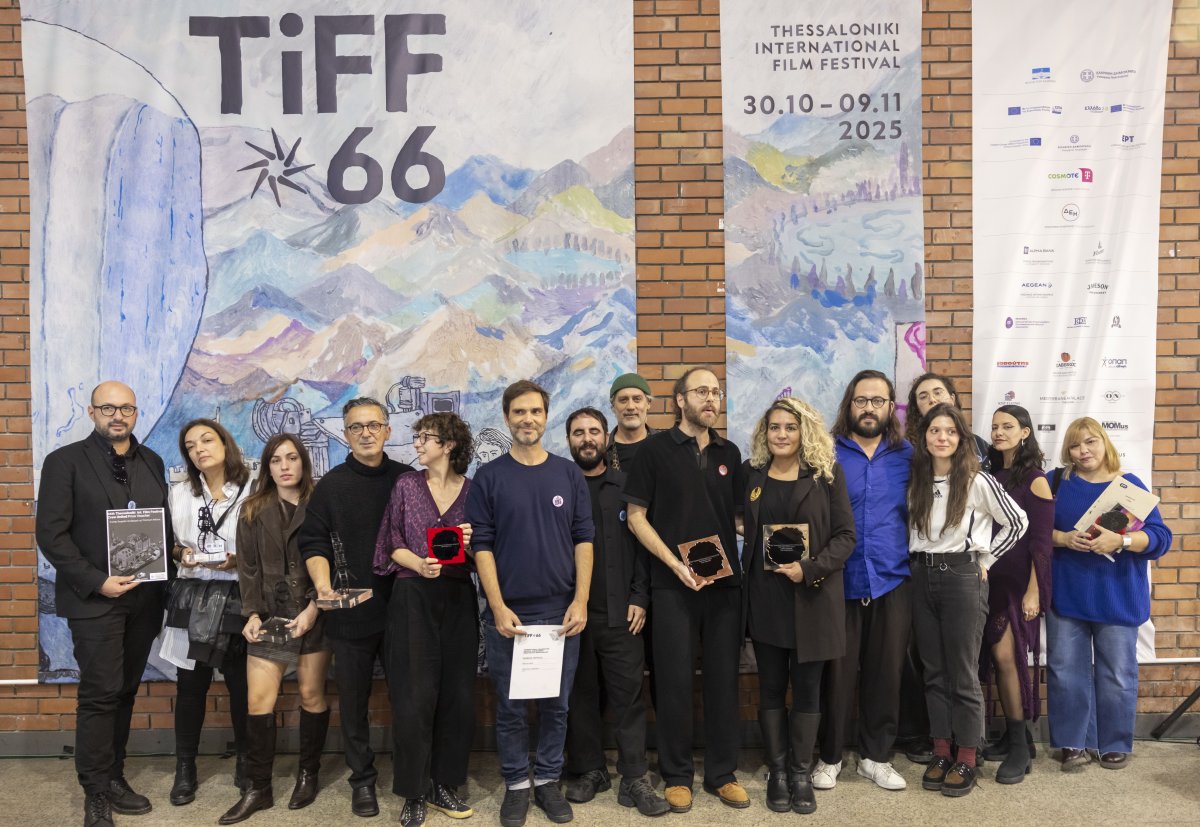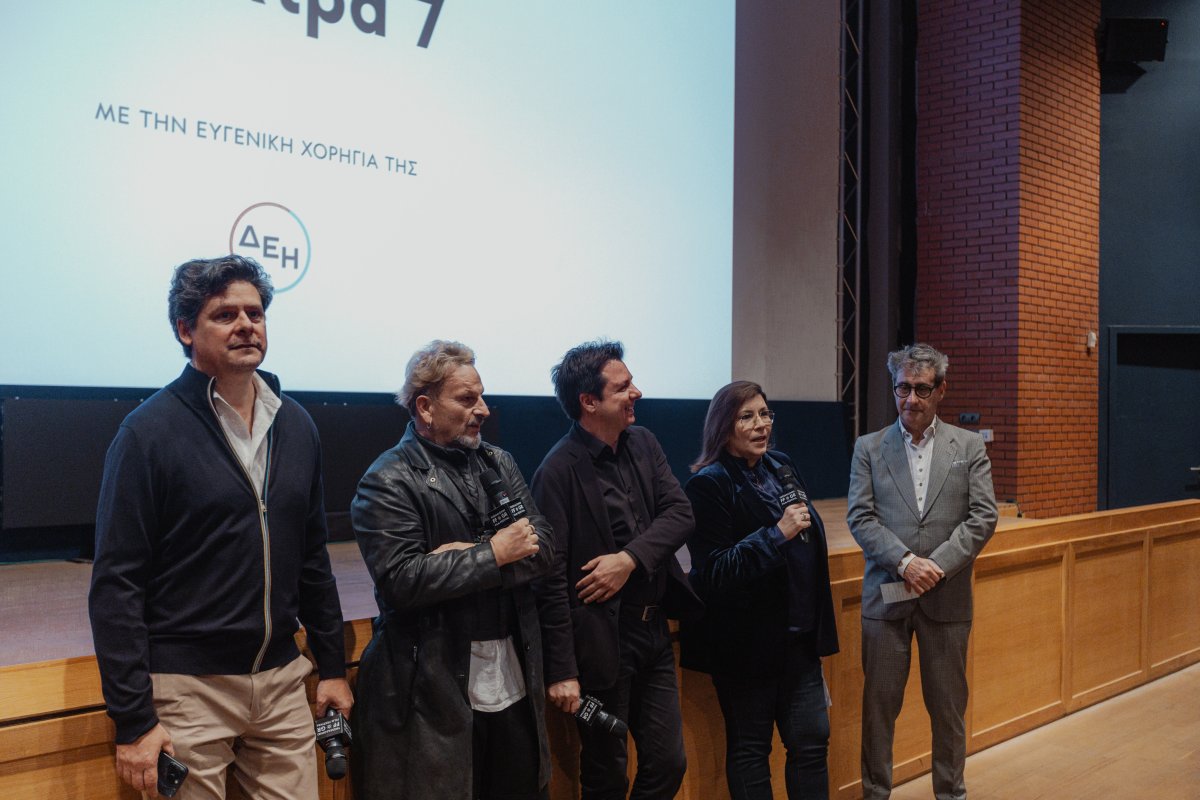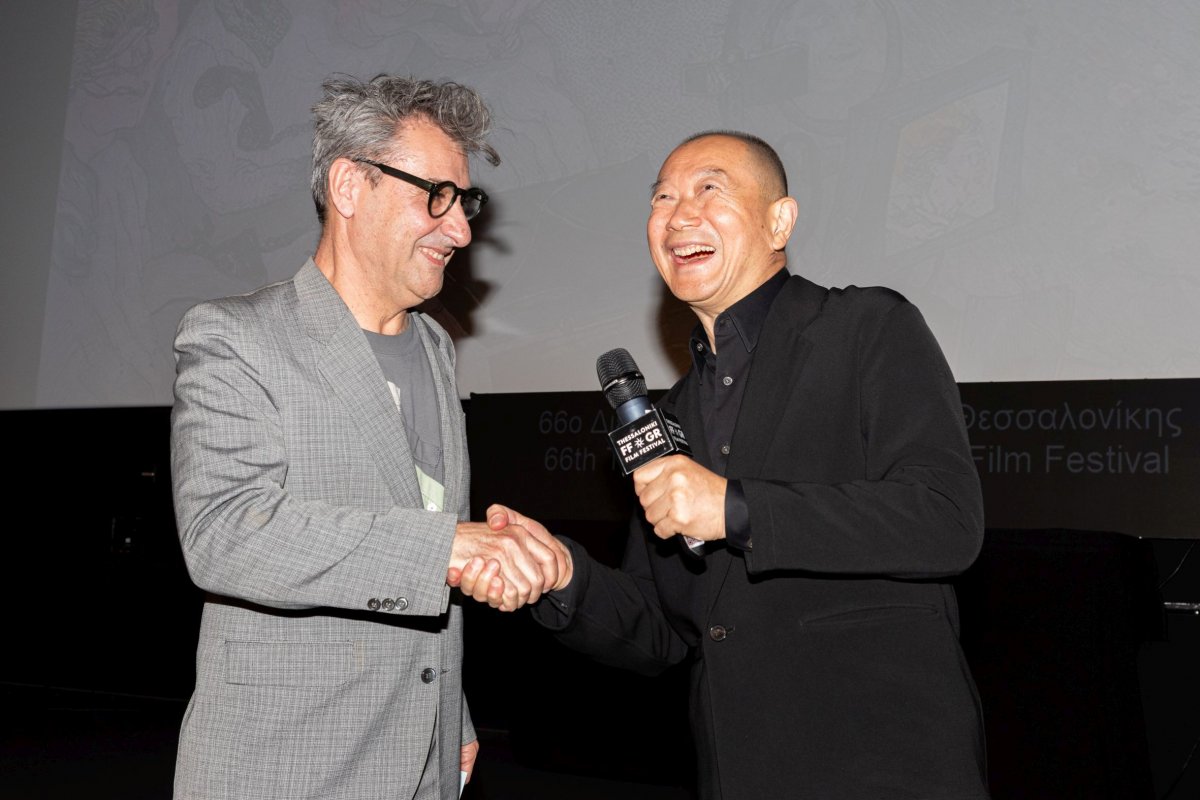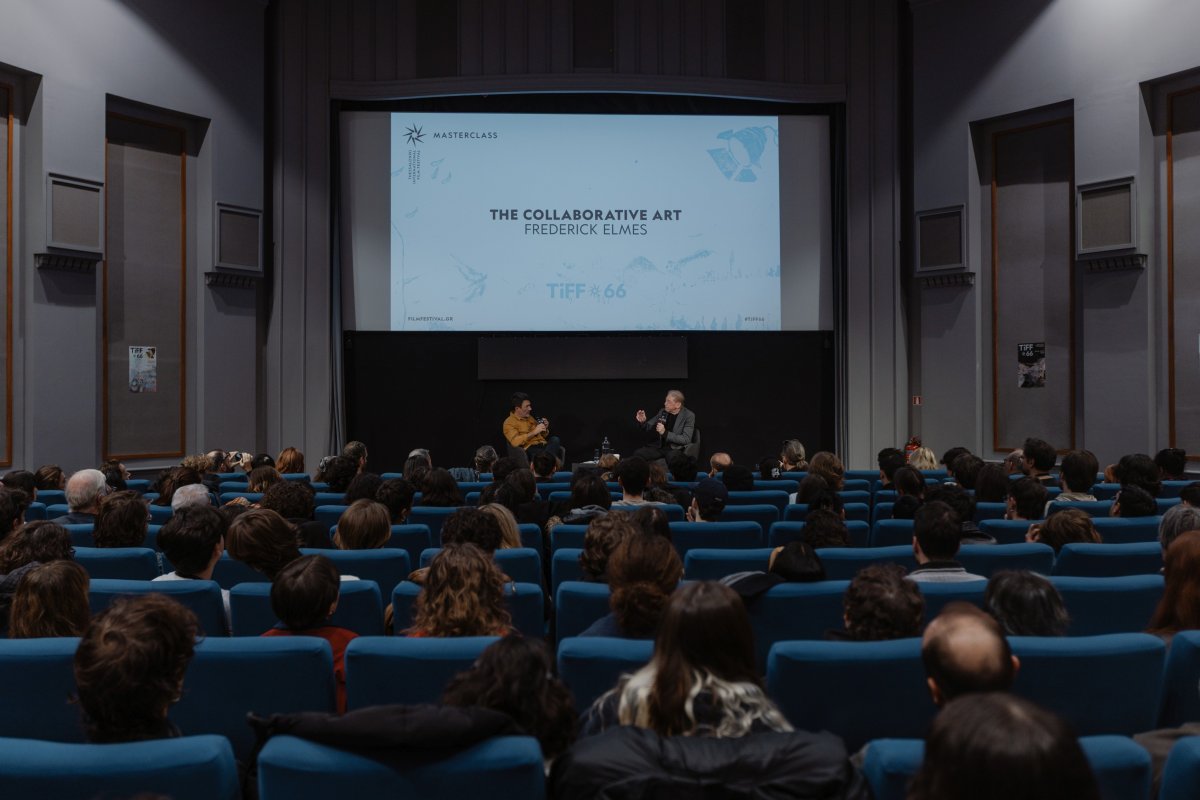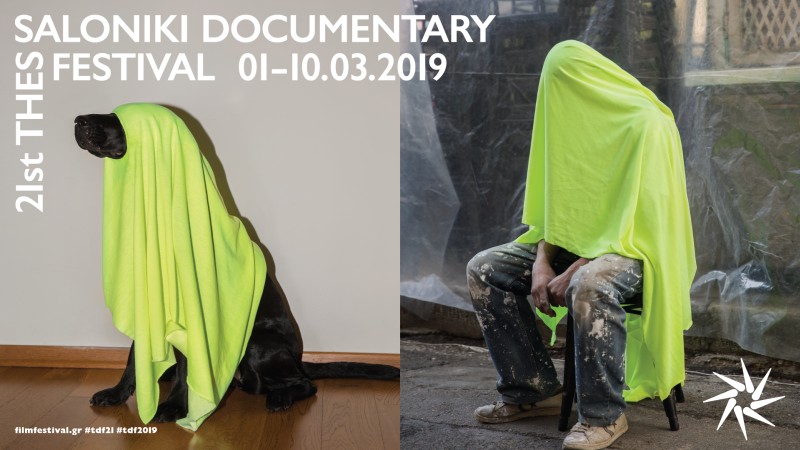A special edition with the great work of a special, multidimensional creator, storyboard artist, George Tasioulas, titled The Tass Book - The Art of Storyboard, was presented on Friday, November 10th, at the Green Room of Olympion, by the Thessaloniki International Film Festival and the production company Marni Films. Tass, as he usually signed, a self-taught and autonomous artist, a lover of cinema and soundtracks, but above all the first to leave an indelible mark as a storyboard artist in the field of contemporary Greek cinema, passed away prematurely two years ago, at the peak of his career. The moving event was attended by his friends and collaborators, his sister Sofia Tasioula, Christos Chouliaras, the director and one of the editors of the publication, and the directors Yiannis Veslemes and Stergios Paschos. The book was presented by Geli Mademli, the coordinator of the Festival's publications, Efi Papazachariou, journalist and the book’s co-editor, Panos Koutras, director and graphic artist Yiannis Karlopoulos, the designer of the publication. They also talked about the work of the beloved artist and the art of storyboarding.
Orestis Andreadakis, the artistic director of the Festival, introduced the discussion and thanked all participants as well as the audience for their presence. "It is a work of love and memory and we are very happy that all the partners who worked on this book are here with us," he said, thanking Theodora Valenti, producer and Marni Films, the production company, as well as Marie Louise Vartholomaiou-Nikolaidou, next to whom and Nikos Nikolaidis George Tasioulas began his career in cinema.
Geli Mademli, afterwards, thanked the audience for their presence and said that "the love for cinema can create a network of people and reveal to us how we work behind what we see. Storyboarding is this kind of art, revealing to us what precedes and what lies behind the final image. There are many ways to make a book, but we carried out our project in a deliberately unconventional and sincere way."
Then, Efi Papazachariou, the co-editor of the book, took the floor. "I had, suddenly, this great proposal, for a man I always wanted to meet in person but eventually got to know through his work. The emotions were incredible and George's works were amazing", she said, while thanking Orestis Andreadakis, Elise Jalladeau, the general director of the Festival, as well as Eleni Androutsopoulou, the head of the Greek Film Festival, "for embracing the idea from the very first moment. George would feel at home at the Festival, cinema was his world." She, then, thanked her co-speakers for their collaboration on the book: "Our aim was to show, on the one hand, his completed works, but also what he hid in his notebooks for they were also unique." In addition, she thanked all the directors who participated in the publication and stressed: "On the one hand, we wanted to have a book that should reveal Tasioulas’ universe, who was an incredible connoisseur of cinema and soundtracks, but also an amazing visual artist. In fact, he was the first to put the storyboard on the map of Greek cinema. On the other hand, storyboarding is not so well known to young people and generally to our country, even among cinephiles, so we wanted to make the reader understand what the storyboard consists of and what the cause that George's art served. This was our big concern in this book." At that point, Geli Mademli added: "We attempted to have balance between the artist and the object of art itself."
Then, Panos Koutras took the floor and spoke about his crucial collaboration with George Tasioulas just before the pandemic, in the film Dodo, which premiered at the 75th Cannes Film Festival. "I didn't know him at all, but I admired his work very much. He was an incredible source of talent and ideas. He was an incredible professional, a very, very important person and artist, certainly very important to me and to my film, and I hope his work will be an inspiration for people in the future. We had an exemplary partnership I will never forget," he said, before adding: “His loss us simply irreplaceable."
Yiannis Karlopoulos, the designer of the book, spoke about the art of storyboarding: "It is a medium, destined to be harmoniously integrated into another medium (the book). What is common between the art of storyboarding and the book is the design, the element that will always be there," he said. As for the approach of the material, he explained that "our starting point for the book can be summed up in the phrase 'we know nothing and we want to know'. The more invisible you are, the more you exist in the work. The more you seem not to try for something, the better the final result is, because you disappear, leaving space for the reader." Geli Mademli added: "We wanted to give the first word to the image and preserve the element of the diary, present in the book, but not just as a motif. We present the storyboards as they evolved in chronological order, while the texts are arranged to frame the image as parentheses."
The discussion ended with a comment by Panos Ch. Koutras, who praised the book for managing to be as compact as Tasioulas' work is, while talking about his mastery as an artist. "His ease of planning and thinking was immense. He was always open to communication," he said.
Afterwards, friends and collaborators of George Tasioulas shared with the audience personal stories and memories of the great artist. Yiannis Veslemes, Director, replying to a question about how the director's relationship with the storyboard artist works, said about Tasioulas: "As you make films and grow up, it is difficult to find the person you may open up to. In my case, George Tasioulas was that kind of man. George knew lenses, he had editing knowledge. He was a passionate cinephile until the end," he concluded.
Finally, the creator's sister shared her thoughts on the book: "When I got it in my hands, I saw George in it. It's like the notebooks he was holding. Since he was young, he studied cinema. The first storyboards he did were with neon paint, wherever he could find some. He was intelligent and with a lot of humour. He forced me to watch movies in order for me to "become human" as he said. I hope this book will inspire young people."


